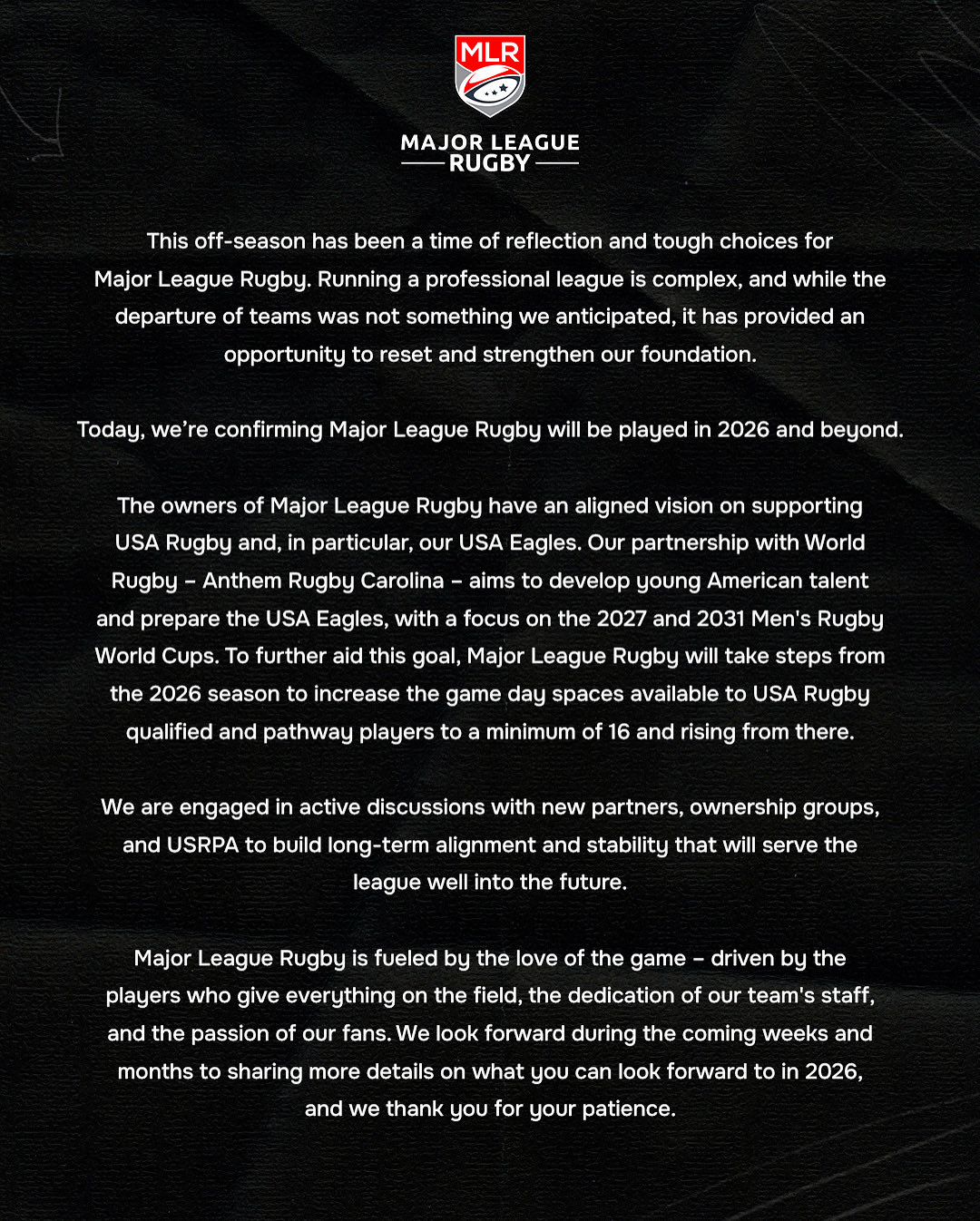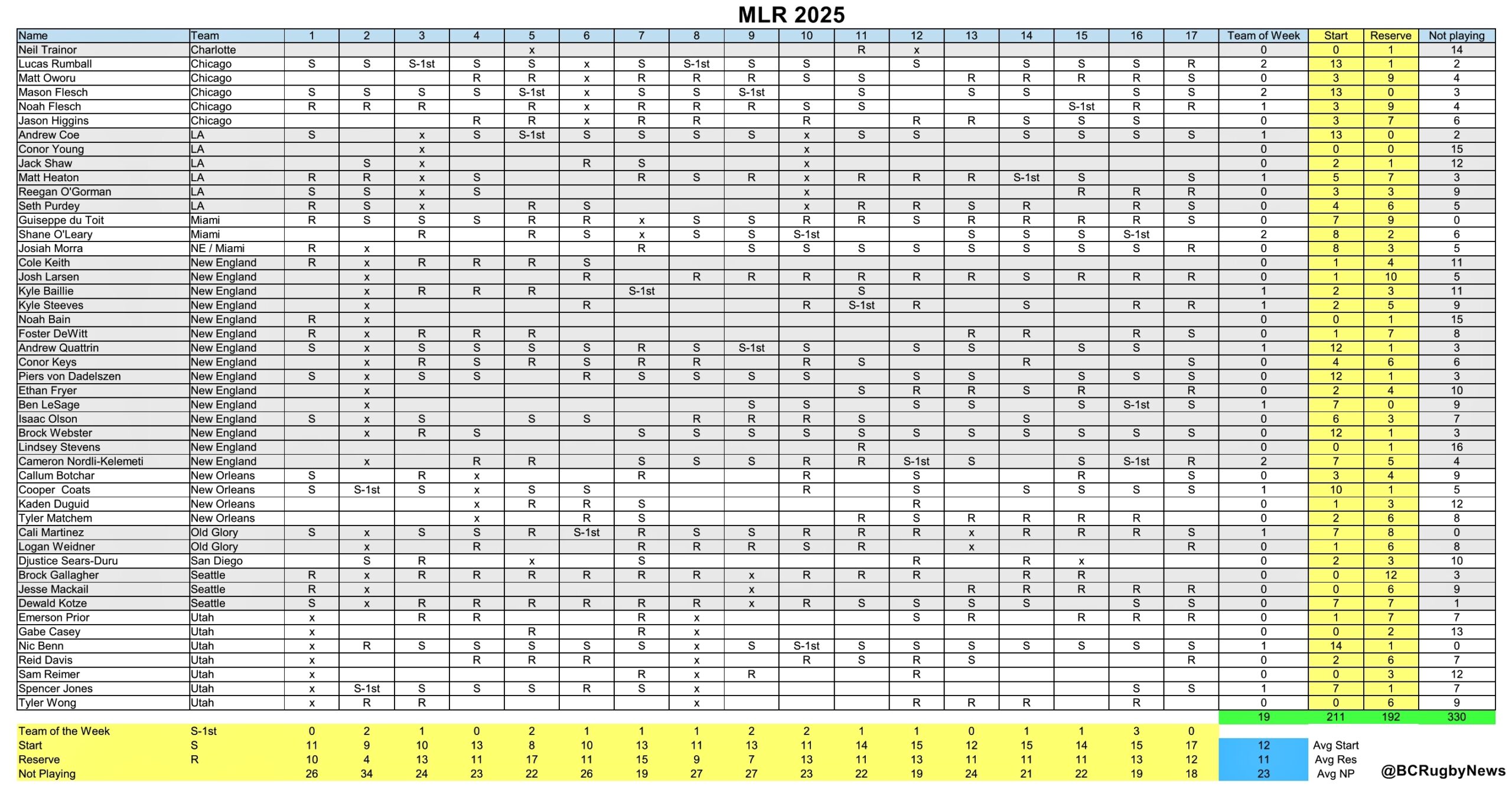Major League Rugby Announces Focus on USA Rugby Qualified Players: What That Means for Canadian Rugby
There was a bit of hand wringing by Canadian rugby fans and pundits last week when Major League Rugby announced that they “will take steps from the 2026 season to increase the game day spaces available to USA Rugby qualified and pathway players to a minimum of 16 and rising from there”. It appears Canadian players will have to compete as imports for one of the 7 non-USA roster spots in 2026, and that number may decrease in future years.
MLR has been floundering a bit in the off season, they lost 3 teams and had 2 teams merge, they’ve gone from an 11 team league to a 7 team league in the off season. This policy, if implemented, will decrease the number of Canadians in a league that has already lost some total player capacity in the off season. There were 47 Canadian players in the league in 2025, on an average 23 of them would be in the match rosters on game day. There were 2 teams, San Diego and Anthem, that had very little Canadian representation, 1 player, and Houston had 0 Canadian players. On the other side of the scale, New England had 16 Canada-eligible players available during the season. New England are 3 time defending champions.
My thoughts on this are, MLR isn’t a high level professional league by world standards. Both the USA and Canada failed to make the 2023 Rugby World Cup using a MLR player first strategy. South American teams claimed both Americas spots in 2023 and the basis of their strength was the semi-professional SLAR competition. Canada has already qualified for 2027, mostly on the basis of one extraordinary performance, the win against USA, that was driven by the inclusion of two professionals from France, Tyler Ardron and Evan Olmstead, and a long overdue coaching change that changed the team culture. Canada has almost two years to prepare for the World Cup which kicks off October 1st 2027, instead of fretting about an MLR franchise in Vancouver or Toronto, develop a Canadian-made solution based on the strengths of the existing infrastructure.
While other issues like growing grassroots rugby, developing elite pathways for juniors are ongoing concerns, the two year plan for preparing a group of elite players to play in a World Cup is a distinct issue. That issue focuses on identifying and developing elite players who will be peaking in two years. Canada’s World Cup will realistically come down to one game against the Band 3 team in its pool, if the pool draws are favourable, that should be a winnable match. Canada wants to be competitive in all its matches and win some fans for Canadian rugby.
Getting players into higher leagues in Tier 1 countries is one path, Andrew Quattrin has gone that route. The BC Premier is the highest level of amateur rugby in North America, it represents a Canadian winter league, pushing that level higher will benefit the national team. Cooper Coats moving to UVic to play #10 while pursuing a medical degree is an example of a player taking that pathway. There’s been various attempts of creating national level competitions in the summer, the Coast to Coast Cup, for example. Fine tune that model. There needs to be some best on best domestic competition and some Canada ‘A’ level games against international competition, to evaluate players.
If you go back to when MLR started in 2018, Canada had just developed a plan to have a centralized player program, Francois Ratier was given the job to lead the program. The start of MLR basically scuppered that program and it never got started. Uruguay’s success in the 2019 World Cup campaign was attributed to their centralized program, the article in the Guardian stated, “The key to all this growth has been the Charrúa Stadium’s High Performance Centre – a project funded partly by World Rugby, the Uruguayan Rugby Union (URU), the Uruguayan government and private companies – which has been hailed by World Rugby as a model for other Tier 2 countries.”
We’ll see what happens, the new coach and Rugby Canada will be driving the process to prepare the team for RWC 2027, there are options available to them if they choose to use them. I can’t help reflect that rugby is a microcosm of society in general, as the USA becomes more protectionist and insular, the options are to remove inter-provincial barriers, look for new markets in Europe, Asia and Oceania, while continuing to negotiate behind the scenes with USA allies.
MLR Public Statement
2025 List of Canadians in MLR


